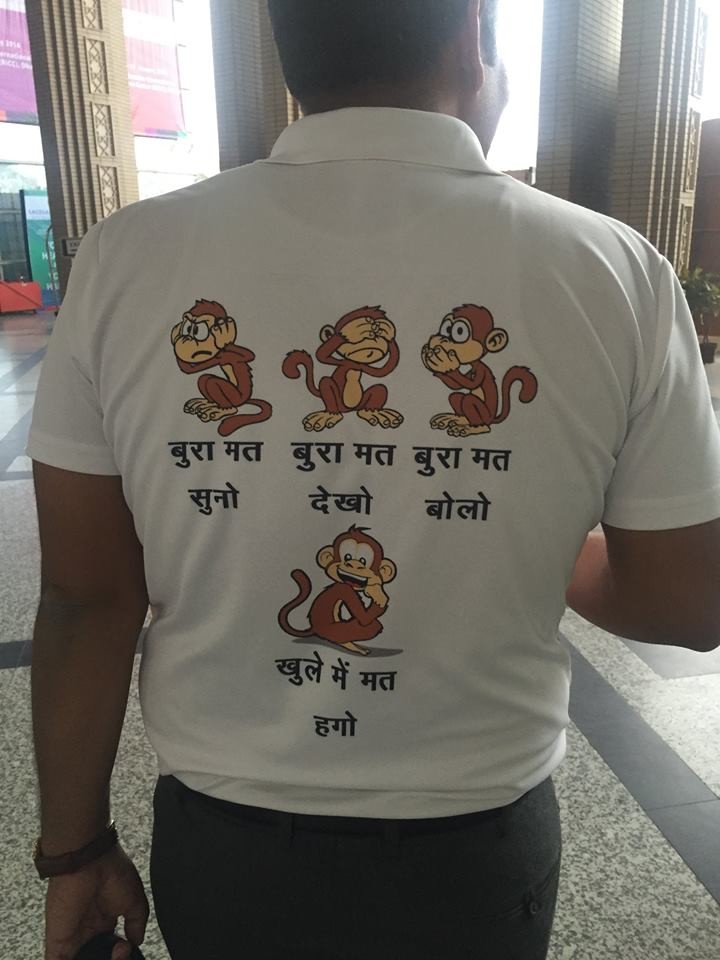(The recent SACOSAN gave an opportunity to understand first hand from Dr M Geetha, Mission Director, Chhatisgarh, steps being taken by the State towards achieving an open daefecation free status. This blog is based on the same)
Chhatisgarh is a Central Indian State carved out of Madhya Pradesh, not long ago. This predominantly tribal State is leaping towards open daefecation free status.
Dr Geetha says, ” We don’t want the fear of failure to stop us from what we really care about ..”. The State has therefore, utilised flexibility provided by the Swachh Bharat Mission, Grameen ( SBM G) to take bold decisions.
Chhatisgarh is perhaps the only Indian State where the State reviews achievement of open daefecation free ( ODF) villages, from the districts, and not, the number of toilets constructed. This shows the emphasis of State on achievement of collective change for health benefits. The State has also actively roped in the key district officials – District Collectors and CEOs of Zilla Panchayats – to lead the programme proactively. The programme has high priority in the overall development agenda – in fact, the State has linked development schemes to ODF villages. The programme also has high political priority – the Chief Minister belongs to Rajnandgaon, one of the best performing districts of the State, and is convinced of the approach of community participation. The overarching policy of the State is focus on behaviour change, especially collective behaviour change and involvement of people.
Dr Geetha identified three challenges – of saturation, scale and sustainability. The saturation challenge arises because some of the villages have scattered populations. Even otherwise, the villages are distantly located. This is being met by very proactive field touring and field work by all those involved. The challenge of scale is also being met tactically – through demonstrative effect on surrounding villages, and by tackling first those villages from where demand is arising. Further, there is a cluster approach, to take contiguous villages together. The challenge of sustainability arises from both structural sustainability of toilets, but more importantly sustainability of behaviour change.
Dr Geetha says that they have stopped using the language of ‘ construction of toilets’ , and only speak of freedom from open daefecation. The people centric approach is evident from the fact that the people are no longer referred to as ” beneficiaries”, but as “owners” !
The institutional strengthening is happening through involvement of Panchayats, village water supply and sanitation committees and vigilance committees ( committees of local people who keep a watch against open daefecators). Partnership with multilateral/support and voluntary organisations is encouraged. Community engagement is effected through ‘natural leaders’, who emerge from within the community. Many of these are being labelled ‘nav ratnas’ ( nine jewels) – and made ambassadors of sanitation at the village, block, district and State level. This recognition of real heroes is a big motivation for everyone to join with this movement. The women self help groups (SHGs) and youth groups, NCC, NSS children are being actively involved. Motivation is infectious. The driver of ex CEO, Zilla Panchayat of a district doubles up as an effective motivator !
State is not shying away from bold decisions. Toilet has been made compulsory for Panchayat representatives and village level functionaries. The use of septic tank, a more expensive technology, is discouraged in favour of low cost twin leach pit through an official State order.
The SBM G programme provides flexibility to the State in utilisation of incentive funds provided for individual toilet. ( An amount of Rs.12,000 is available, with Rs. 7200 as Central share, and Rs. 3800 as State share). The States/ districts can choose to give this incentive either directly to the individual household, or to the village as a whole, after the village becomes completely ODF, using the community approach. The State of Chhattisgarh has decided not to give upfront incentive, in order to delink ODF objective from incentive money, and a clearer focus on behaviour change. Some of the districts are adopting giving incentive money collectively to the village, after it becomes ODF.
A multi tier system has been put in place to verify ODF claims.
The State still faces many challenges. The first one is short time frame available to achieve outcomes. Slow acceptance of low-cost technology, geographical inaccessibility of far flung areas, dysfunctional toilets and availability of sufficient water are other challenges. But the State marches ahead ” doing what is right, the right way, at the right time!”

This is really a roll out of what was hoped will happen , when the Guidelines were drafted.
It will be interesting to follow closely the actual implementation of the Chhattisgarh effort…and document the process for future
LikeLike
Nicely captured. This piece warrants a sequel on how the power of leadership by a long chalk has a huge impact on the behavior change process and attitudinal transformation (hritgrahi to maalik journey, district led niche campaigns etc).
LikeLike